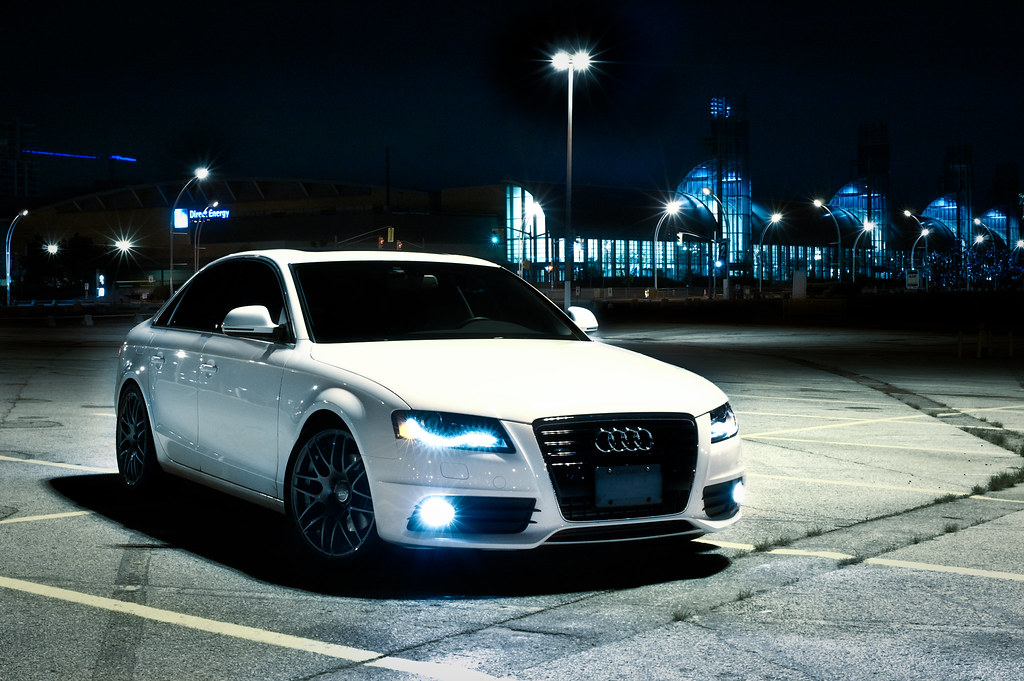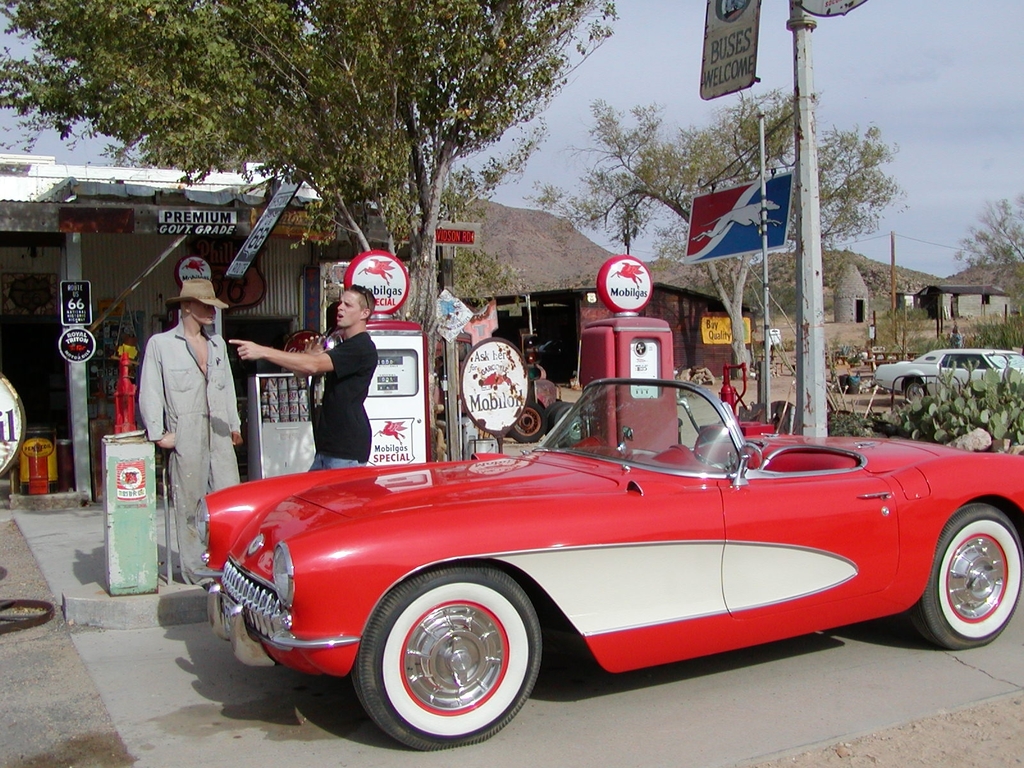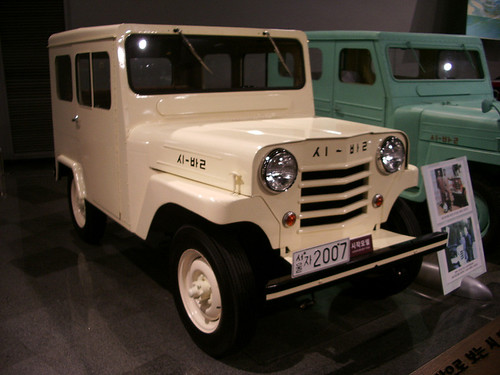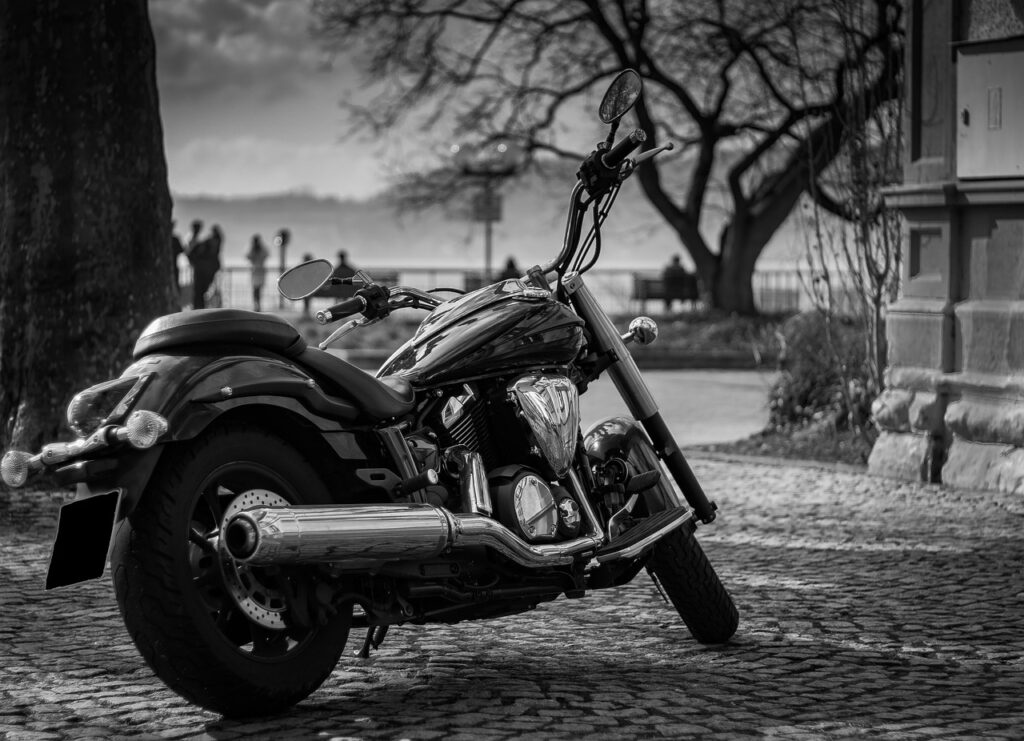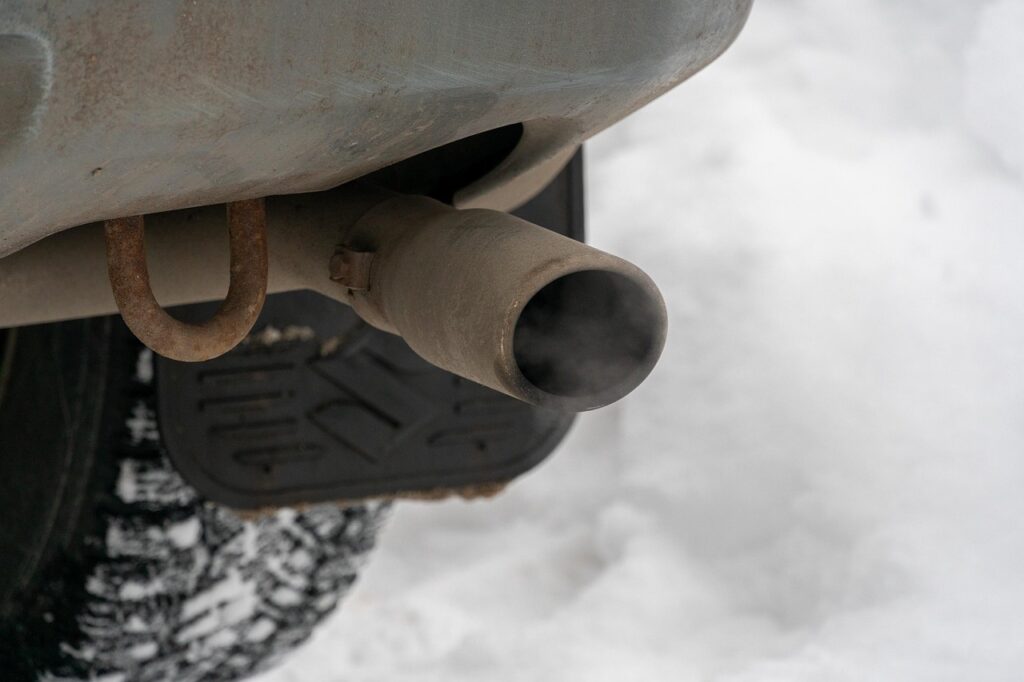
Every car owner who navigates the challenging terrain of harsh winters knows the apprehension that surfaces as the snow finally recedes: the pervasive threat of rust. This isn’t merely a cosmetic concern; the damage rust can inflict extends far beyond the surface, potentially compromising a vehicle’s structural integrity, marring its aesthetic appeal, and significantly diminishing its resale value. It’s a silent assailant that works tirelessly, accelerated by the relentless assault of snow, salt, and fluctuating temperatures characteristic of winter months. For many, a car is one of their most significant investments, and protecting it from such insidious degradation is paramount.
The automotive landscape presents a stark contrast in how manufacturers approach this challenge. Some commit substantial resources to innovative rust protection, deploying advanced materials and sophisticated processes to shield drivers from unwelcome surprises when spring arrives. These forward-thinking brands prioritize longevity and reliability, understanding that a car’s ability to withstand the elements directly impacts owner satisfaction and long-term value. Conversely, other manufacturers, sometimes due to cost-saving strategies or reliance on outdated technologies, produce vehicles that regrettably capitulate to the harsh realities of winter after only a handful of frosty seasons, leaving owners with expensive repairs and diminished vehicle worth.
For car shoppers, especially those residing in regions perpetually contending with snow, road salt, and extreme temperature shifts, meticulously evaluating a vehicle’s rust-related resilience is a critical step. This in-depth report aims to provide practical insights for both prospective buyers and current enthusiasts by examining shining examples of rust-proof engineering alongside cautionary tales of models infamous for rapid deterioration. By understanding these distinctions, consumers can make educated decisions that not only protect their significant automotive investments but also ensure peace of mind through winter’s worst conditions. We’ll start by exploring the vehicles that consistently defy corrosion, setting a high standard for winter durability.

1. **Toyota Tacoma**The Toyota Tacoma, particularly its more recent iterations, has commendably elevated the benchmark for rust protection, largely thanks to crucial advancements in its manufacturing processes. This is a significant turnaround, as earlier Tacoma models were once widely recognized for severe frame rust issues, prompting Toyota to initiate a substantial frame replacement recall. The company’s response was definitive and comprehensive, involving a thorough retooling of its build process to tackle the root causes of the problem.
This dramatic shift was far from a superficial or marketing-driven adjustment; it signified a genuine leap forward in ensuring the truck’s durability, particularly in challenging climates. Today’s Tacoma benefits from significantly enhanced frame coating, state-of-the-art galvanization techniques, and an engineering focus on meticulously sealing potential water entry points that could otherwise trap corrosive moisture. Toyota now utilizes an e-coat, or electro-deposition primer, across the chassis, a method that provides dramatically superior coverage compared to older spray-based applications.
This meticulous attention to detail has firmly established the Tacoma as a preferred choice among tradespeople, outdoor adventurers, and anyone who understands the hidden costs associated with rust damage. Consistent positive reviews from owners in the northern United States and Canada strongly corroborate Toyota’s claims regarding the Tacoma’s improved rust resistance. Inspections of models aged three to five years frequently reveal only minimal surface rust, and crucial underbody components demonstrate remarkable resilience even after persistent exposure to road salt and snow.
Why does the Tacoma warrant such focused attention? Its journey from being rust-prone to becoming a leader in rust resistance perfectly exemplifies how strong manufacturer accountability, coupled with responsive customer feedback, can catalyze substantial real-world improvements in vehicle design and construction. Consumers actively seeking a mid-size pickup truck with the assurance of durable, corrosion-resistant underpinnings are increasingly turning to the Tacoma. They do so with the understanding that Toyota’s extensive engineering revisions were not merely a temporary fix, but a deliberate effort to future-proof a highly cherished and capable model.
As a powerful symbol of learning from past challenges and implementing robust solutions, the Toyota Tacoma presents a compelling argument for being a best-in-class vehicle when it comes to winter durability. Its evolution showcases how a commitment to quality can transform a weakness into a defining strength, offering long-term reliability where it truly matters.
Car Model Information: 2015 Toyota Tacoma Base
Name: Toyota Tacoma
Caption: 2020 Toyota Tacoma TRD Off-Road
Manufacturer: Toyota
Production: January 1995 – present
ModelYears: 1995–present
Class: unbulleted list
Layout: Front-engine, rear-wheel-drive layout
Predecessor: Toyota Hilux (N80)
Categories: 2000s cars, 2010s cars, 2020s cars, All-wheel-drive vehicles, All Wikipedia articles written in American English
Summary: The Toyota Tacoma is a pickup truck manufactured by Japanese automobile manufacturer Toyota since 1995. The first-generation Tacoma (model years 1995 through 2004) was classified as a compact pickup; subsequent models are classified as mid-sized pickups. The Tacoma was Motor Trend’s Truck of the Year for 2005.
As of 2015, the Tacoma was sold in the United States, Canada, Mexico, Costa Rica, Bolivia, Bermuda, and the French overseas collectivity of New Caledonia. Most markets across the world receive the Toyota Hilux in lieu of the Tacoma.
The name “Tacoma” was derived from the Coast Salish peoples’ name for Mount Rainier in the U.S. state of Washington.
Get more information about: Toyota Tacoma
Buying a high-performing used car >>>
Brand: Toyota Model: Tacoma
Price: $19,088 Mileage: 171,500 mi.
Read more about: The Definitive Guide to the 14 Best All-Weather Floor Mats of 2025: Durability, Fitment, and Protection Ranked
2. **Audi A4**Audi’s well-established reputation for meticulous engineering and unwavering attention to detail is consistently mirrored in the impressive longevity of its vehicles, and the A4 sedan stands as a prime illustration of this commitment. The German automaker’s extensive implementation of galvanized steel, featuring a zinc coating on every single body panel, has effectively transformed the A4 into one of the most robust sedans available when it comes to fending off the relentless advance of rust.
Decades ago, Audi pioneered a shift towards full-body galvanization for a significant portion of its vehicle lineup. This strategic decision ensured that water and aggressive de-icing chemicals would face formidable resistance in their attempts to penetrate the vehicle’s exterior, providing a foundational layer of protection. Modern Audi A4s further augment this defense with the strategic application of cavity wax and injected foams within critical areas such as doors, sills, and other tight body spaces. These measures serve a dual purpose: beyond sound insulation, they actively repel moisture, which is the primary catalyst for the initiation of corrosion.
Another significant asset in the Audi A4’s rust-proofing arsenal is its sophisticated multi-stage paint layering process. These advanced paint systems provide an additional, formidable barrier against chipping and underlying damage that can result from impacts with road debris, which is particularly prevalent during winter driving conditions. Owners of the A4 frequently observe that even vehicles approaching a decade in age often maintain bodies remarkably free of bubbling paint or panel swelling – common, telltale signs that rust is insidiously festering beneath the surface.
These consistent owner testimonials, coupled with consistently low rates of vehicle inspection failures attributed to rust, firmly cement the Audi A4’s position at the pinnacle of the sedan segment, particularly for drivers in rust-prone geographical areas. For individuals who desire both luxurious refinement and unwavering all-weather dependability, the Audi A4 offers a profound sense of peace of mind that few rivals can genuinely match. Its thoroughly proven capability to withstand salty, wet winters effectively maintains high resale values and minimizes the occurrence of costly maintenance headaches, thus fully justifying its prominent inclusion on any comprehensive shortlist of rust-proof vehicles.
Car Model Information: 2018 Audi A4 2.0T Premium
Name: Audi A4
Caption: Audi A4 (B9.5; facelift)
Manufacturer: Audi AG
Production: 1994–2025
Assembly: Germany,India,China,Indonesia,Ukraine
Class: Compact executive car
BodyStyle: Sedan (car)
Platform: Volkswagen Group B platform
Layout: Front-engine, front-wheel drive layout
Sp: uk
Predecessor: Audi 80
Successor: Audi A5#Third generation (2024)
Categories: 2000s cars, 2010s cars, 2020s cars, All-wheel-drive vehicles, All articles lacking reliable references
Summary: The Audi A4 is a line of luxury compact executive cars produced from 1994 to 2025 by the German car manufacturer Audi, a subsidiary of the Volkswagen Group. The A4 has been built in five generations and is based on the Volkswagen Group B platform. The first generation A4 succeeded the Audi 80. The automaker’s internal numbering treats the A4 as a continuation of the Audi 80 lineage, with the initial A4 designated as the B5-series, followed by the B6, B7, B8, and the B9.
The B8 and B9 versions of the A4 are built on the Volkswagen Group MLB platform shared with several models and brands across the Volkswagen Group. The Audi A4 automobile layout consists of a front-engine design, with transaxle-type transmissions mounted at the rear of the engine. The cars are front-wheel drive, or on some models, “quattro” all-wheel drive. The A4 is available as a sedan and station wagon. Historically, the second (B6) and third generations (B7) of the A4 also included a convertible version. For the B8 and B9 versions, the convertible, along with a new coupé and 5-door liftback variant, was spun-off by Audi into a new nameplate called the Audi A5.
It has been manufactured in Ingolstadt since its beginning, in Changchun China by FAW-VW since 2003 and in Aurangabad India by Audi India since 2007.
The B9 generation A4 and A5 will be replaced by B10 version of A5, as part of Audi’s new naming convention.
Get more information about: Audi A4
Buying a high-performing used car >>>
Brand: Audi Model: A4
Price: $19,971 Mileage: 46,907 mi.
Read more about: Seriously, What Happened? The Wild Ride of Engine Downsizing and Why Your Car’s Heart Just Isn’t What It Used To Be
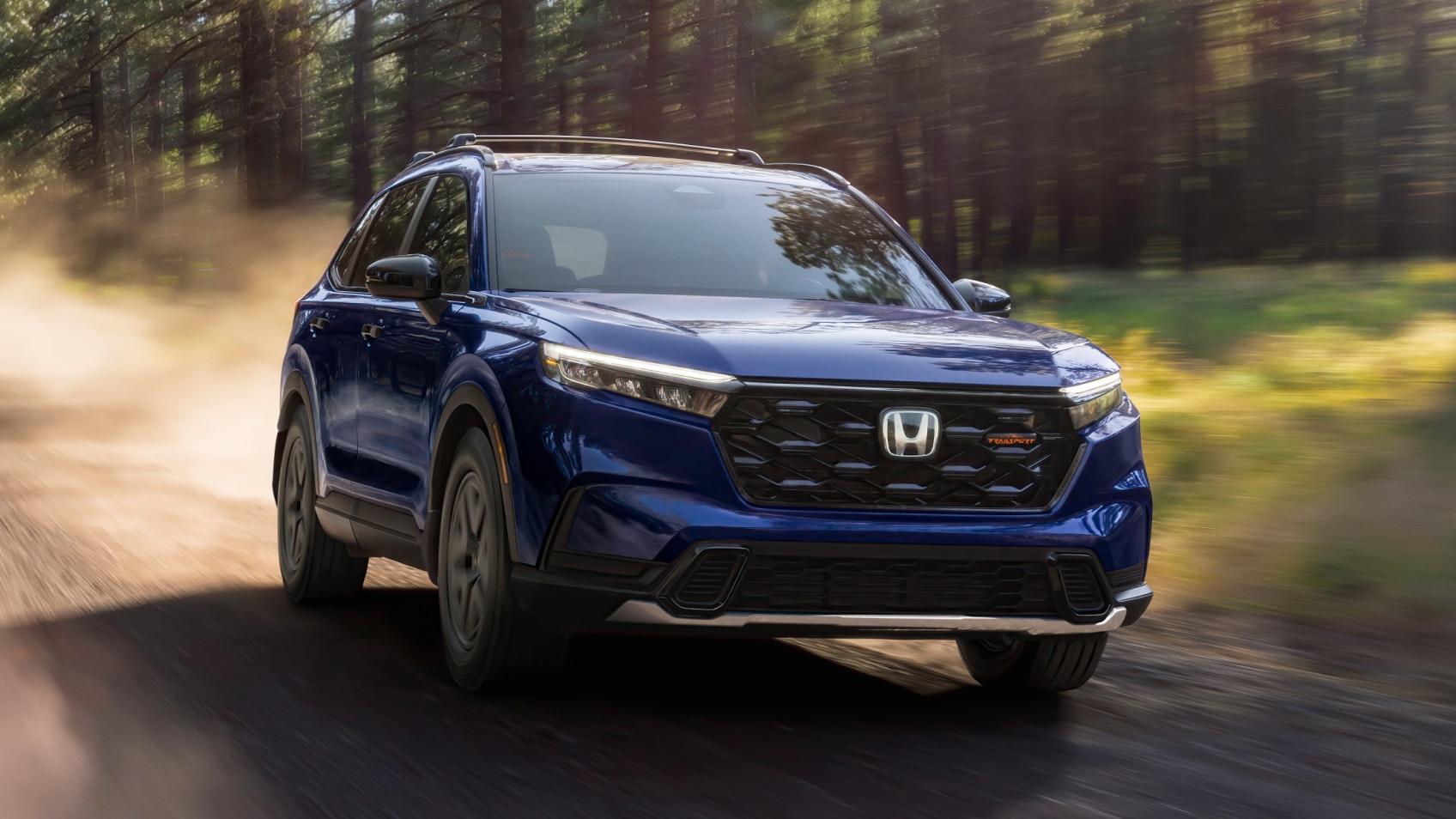
3. **Honda CR-V**The Honda CR-V has consistently earned its place as a perennial favorite across North America, and a substantial contributor to its widespread popularity is its remarkable resilience when confronted with the rigors of harsh winter conditions. Through successive model years, Honda has diligently refined the CR-V’s anti-corrosion strategies, actively responding to and addressing earlier owner complaints concerning rust around the fenders and wheel arches. This commitment to continuous improvement has yielded significant benefits for modern CR-V owners.
Contemporary CR-V models now benefit from comprehensive underbody coatings, meticulously improved seam welds, and an innovative use of plastic or composite fenders. These advanced materials offer a significant advantage: they present no metallic surface for rust to target, thereby eliminating a common point of vulnerability. Beyond robust galvanization and generous applications of thick undercoating, Honda’s engineers pay exceptional attention to the vehicle’s intricate drainage pathways.
Recognizing that water accumulation in hidden nooks and crannies is a rapid pathway to corrosion, the design team has meticulously engineered specific channels. These pathways are designed to efficiently direct water away from critical body cavities, preventing the insidious pooling that often initiates rust. Furthermore, the strategic application of wax-based sealants provides an additional layer of protection, actively guarding internal sections against moisture infiltration, even in the most challenging wet conditions.
Owner experiences consistently reinforce Honda’s claims of enhanced rust resistance. There are numerous reports of CR-Vs that are a decade old, yet display only minimal signs of corrosion – an impressive accomplishment considering their widespread use and enduring popularity in the challenging climates of Canada and the northern United States. These capable SUVs demonstrably stand up to the corrosive effects of road salt and slush, largely avoiding the infamous rear wheel well rust that frequently plagues and compromises older vehicles from other manufacturers.
The Honda CR-V’s inclusion on this list is not merely a testament to its practicality as a family vehicle; it stands as a clear and compelling example of how ongoing enhancements to design, material selection, and sophisticated factory processes can dramatically mitigate the risk of rust for everyday drivers, particularly those who regularly navigate snowy and salt-laden climates. Its evolution underscores a manufacturer’s dedication to real-world durability.
Car Model Information: 2014 Honda CR-V EX
Name: Honda CR-V
Caption: 2023 Honda CR-V e:HEV
Manufacturer: Honda
Aka: Honda Breeze (China, 2019–present)
Production: 1995–present
Class: Compact crossover SUV
BodyStyle: Sport utility vehicle
Layout: Front-engine, front-wheel-drive layout,Front-engine, four-wheel-drive layout
Chassis: Unibody
Predecessor: Honda Crossroad
Successor: Honda ZR-V
Categories: 2000s cars, 2010s cars, 2020s cars, All-wheel-drive vehicles, All Wikipedia articles written in British English
Summary: The Honda CR-V (also sold as the Honda Breeze in China since 2019) is a compact crossover SUV manufactured by Japanese automaker Honda since 1995. Initial models of the CR-V were built using the same platform as the Civic.
Honda began producing the CR-V in Japan and United Kingdom, for worldwide markets, adding North American manufacturing sites in the United States and Mexico in 2007, and Canada in 2012. The CR-V is also produced in Wuhan for the Chinese market by Dongfeng Honda, and also marketed as the Breeze in China for the version produced at Guangzhou by Guangqi Honda.
Honda states that “CR-V” stands for “Comfortable Runabout Vehicle,” while the term “Compact Recreational Vehicle” was used in a British car review article that was republished by Honda, associating the model name with the Sports Utility Vehicle abbreviation of SU-V.
As of 2022, the CR-V is positioned between the smaller ZR-V (marketed as HR-V in North America) — with which the CR-V shares a platform — and the larger North American market Passport/Pilot or the Chinese market Avancier/UR-V. It is currently Honda’s best-selling vehicle in the world, and the second best-selling SUV globally in 2020.
Get more information about: Honda CR-V
Buying a high-performing used car >>>
Brand: Honda Model: CR-V
Price: $10,510 Mileage: 153,586 mi.
Read more about: The Definitive Guide to the 14 Best All-Weather Floor Mats of 2025: Durability, Fitment, and Protection Ranked
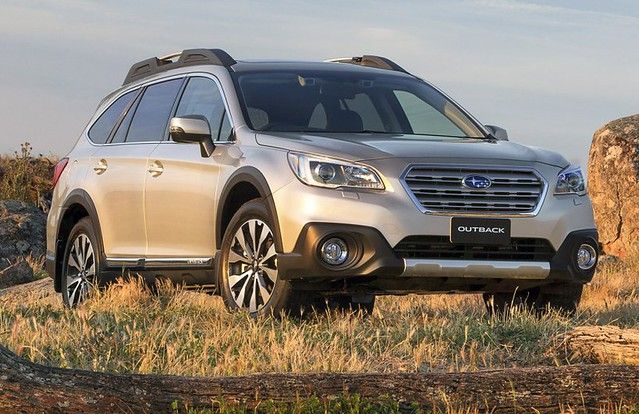
4. **Subaru Outback**In regions where winter driving is not merely a seasonal nuisance but an integral part of daily life, the Subaru Outback has become virtually synonymous with unwavering confidence and steadfast reliability. A significant, underlying reason for its enduring and widespread popularity is Subaru’s meticulously comprehensive anti-corrosion engineering, a testament to their deep understanding of challenging environments. This systematic approach begins with the fundamental structure of the vehicle itself.
Starting at the very frame, the Outback’s underbody receives generous applications of high-quality seam sealers and robust rock guards. These features are not merely optional extras; they are vital components for vehicles that are explicitly designed to confront gravel-strewn roads, treacherous icy patches, and countless miles of de-icing agents applied each winter. Subaru’s consistent use of galvanized steel for all primary body panels, meticulously paired with thicker paint applications and specialized wheel well liners, creates an incredibly formidable barrier. This sophisticated layering makes it exceptionally difficult for salt-laden slush and corrosive road grime to gain a foothold and initiate the rusting process.
Furthermore, the brand’s unwavering attention extends to seemingly minor yet critically important details, such as the strategic placement of rubberized plugs and precisely engineered drain holes within doors and sills. These seemingly small construction elements play a crucial role by actively limiting the accumulation of trapped moisture, thereby preventing it from lingering and causing damage. Such thoughtful design choices provide clear evidence of Subaru’s profound understanding of the complex, real-world challenges that winter driving presents to vehicle longevity.
Outback owners consistently report high levels of satisfaction concerning the long-term appearance and fundamental chassis integrity of their vehicles. Inspections of older models frequently indicate that, while normal wear and tear are to be expected over time, significant structural rust rarely manifests itself unless the vehicle has experienced serious neglect or exceptionally unusual circumstances. This speaks volumes about the inherent durability built into each Outback.
Considering Subaru’s widely recognized and deeply ingrained commitment to delivering outstanding all-weather capability, the Outback’s superior rust resistance transforms what could otherwise be a seasonal vulnerability into a year-round, unwavering strength. For both rural and urban drivers, the Outback distinguishes itself as a thoughtfully engineered solution to winter’s relentless and corrosive assault, truly deserving of its prominent placement on any comprehensive list comparing rust-proof vehicles.
Car Model Information: 2009 Subaru Impreza Outback Sport
Name: Subaru Outback
Caption: 2023 Subaru Outback Premium
Manufacturer: Subaru
Production: 1994–present
ModelYears: 1995–present
Assembly: Ota, Gunma
Aka: Subaru Legacy
Class: Mid-size car
BodyStyle: station wagon
Categories: All Wikipedia articles written in American English, All articles with unsourced statements, Articles containing Japanese-language text, Articles with short description, Articles with unsourced statements from April 2012
Summary: The Subaru Outback is an automotive nameplate used by the Japanese automaker Subaru for two different themed vehicles: a Legacy-derived station wagon, the Outback (1994–present, also sold as Legacy Outback (Japanese: スバル・レガシィアウトバック, Hepburn: Subaru Regashi Autobakku) in some markets), and an Impreza-derived off-road themed hatchback, the Outback Sport (1994–2011).
Most versions of the Outback wagon and Outback Sport have had all-wheel drive as standard equipment.
Get more information about: Subaru Outback
Buying a high-performing used car >>>
Brand: Subaru Model: Outback
Price: $6,495 Mileage: 126,643 mi.
Read more about: Unearthing 15 Unsung 90s Sedans: Reliable Transport Gems for Today’s Commuters
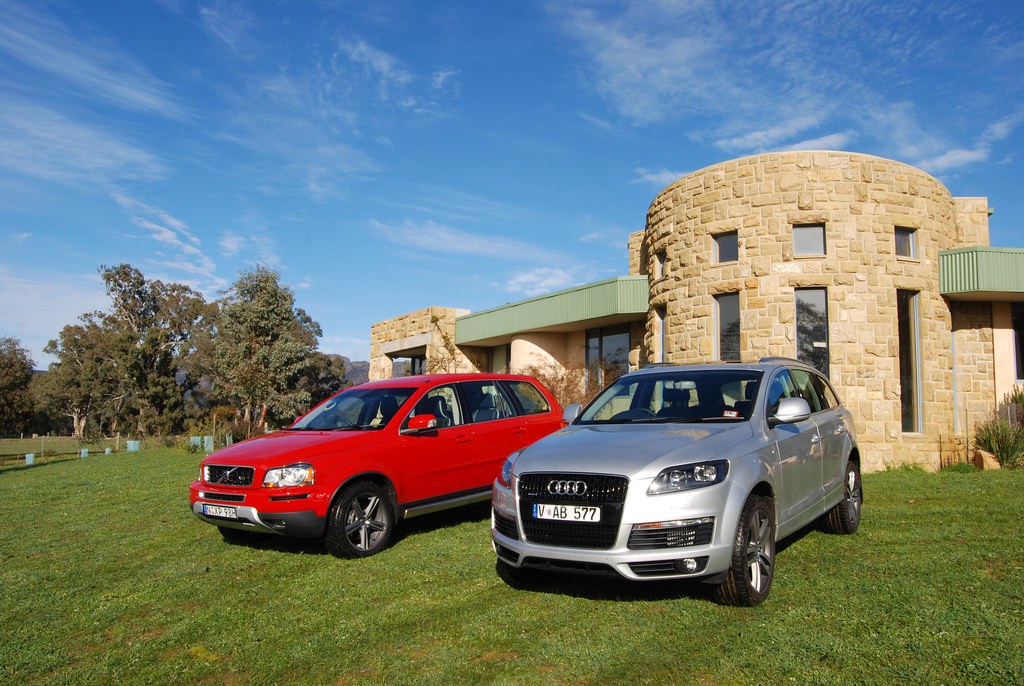
5. **Volvo XC90**Swedish automaker Volvo carries a distinguished legacy of designing and manufacturing vehicles specifically engineered to excel in extreme climates, and the XC90 SUV stands as arguably one of the most effective defenses a driver can deploy against the destructive forces of rust. Its robust body structure is meticulously crafted from high-tensile, double-galvanized steels, providing an exceptional foundation of corrosion resistance. Complementing this, the undercarriage is comprehensively protected by extensive, durable coatings and intelligently positioned liners, forming a formidable shield against environmental aggressors.
Volvo goes even further in its proactive approach by strategically employing composite body panels in areas that are most acutely exposed to spray emanating from the tires. This innovative use of materials effectively blocks the nearly constant barrage of slush, road salt, and abrasive grit, preventing these corrosive elements from ever making contact with susceptible metallic surfaces. An additional and particularly notable innovation that Volvo integrates is the inclusion of sacrificial anodes in specific critical areas of the vehicle’s structure. These cleverly designed metal elements are engineered to attract corrosion, thereby sacrificing themselves to spare other more vital frame components from degradation.
The vehicle’s multi-layered system of primer, paint, and a resilient clear coat acts as a further, impenetrable deterrence against environmental damage. Furthermore, the robust and meticulously designed weatherstrip systems that encircle doors and hatches are crucial in maintaining dry interior panels, even when subjected to the harsh and recurring freeze-thaw cycles that are characteristic of severe winters. This attention to sealing and protection ensures moisture stays out where it belongs.
Why does the XC90 merit such focus? It serves as a prime example of a profoundly proactive and holistic approach to mitigating climate-related challenges in automotive engineering. Owners in Scandinavia, Canada, and the northern United States frequently share compelling anecdotes of XC90s accumulating exceptionally high mileages with little to no visible rust, even after enduring years of exceptionally difficult and corrosive winters. The thoughtful and deliberate deployment of advanced materials and cutting-edge protection measures resonates through every single aspect of this impressive SUV’s design, underscoring its inherent resilience.
For discerning customers who demand unwavering confidence and long-term durability through salty, icy seasons, the Volvo XC90 represents a model that reliably preserves both its elegant form and essential function throughout many years of dedicated service. It is a testament to engineering excellence focused on real-world, long-term performance.
For every vehicle engineered to expertly resist the ravages of winter, a considerable number of others regrettably fall short. The automotive industry has its share of examples where initial cost-cutting, reliance on outdated designs, or manufacturing blind spots led to specific models becoming infamous for visible and structural rust in remarkably short periods. For buyers unaware of these shortcomings, the reality can quickly become frustrating and financially burdensome, as rust often appears not only on visible body panels but also beneath the surface, quietly eroding safety and significantly diminishing resale value.
Highlighting these five cars that historically struggle with corrosion is more than just a cautionary tale; it’s an invaluable opportunity for both current and prospective owners to understand why certain models are best avoided in challenging winter climates. The vulnerabilities are diverse, often stemming from inferior rust-proofing or design flaws that inadvertently trap corrosive slush and moisture. Whatever the root cause, the long-term effects on vehicle ownership are invariably substantial and costly. This critical attention provides insights vital for anyone planning to retain a vehicle for more than a single winter season.
Car Model Information: 2016 Volvo XC90 T6 Momentum
Name: Volvo XC90
Caption: 2025 Volvo XC90
Manufacturer: Volvo Cars
Production: 2002–present
Class: Executive car,crossover SUV
BodyStyle: SUV
Layout: ubl
Categories: 2010s cars, 2020s cars, All-wheel-drive vehicles, All articles with dead external links, All articles with unsourced statements
Summary: The Volvo XC90 is a mid-size luxury SUV manufactured and marketed by Volvo Cars since 2002 and in its second generation.
The first generation was introduced at the 2002 North American International Auto Show and used the Volvo P2 platform shared with the first generation Volvo S80 and other large Volvo cars. It was manufactured at Volvo’s Torslandaverken in Sweden. Volvo moved production equipment of the first generation to China and ended Swedish production at the end of 2014, renaming the car as the Volvo XC Classic (or Volvo XC90 Classic).
At the end of 2014, the second generation XC90 was introduced. It is based on a new global platform, the Scalable Product Architecture (SPA). Both generations of the XC90 have won Motor Trend’s SUV of the Year award in their debuts.
In late 2022, the electric-only EX90 was introduced as the successor of the XC90. However, in September 2024, Volvo launched the second facelift of XC90, and stated that both models would be sold together for the foreseeable future.
Get more information about: Volvo XC90
Buying a high-performing used car >>>
Brand: Volvo Model: XC90
Price: $8,250 Mileage: 171,243 mi.
Read more about: The Road Ahead: 14 Game-Changing Cars, Trucks, and SUVs We Can’t Wait to Drive in 2026!

6. **Chevrolet Silverado (Pre-2014 Models)**The Chevrolet Silverado, particularly models manufactured prior to 2014, is notorious for succumbing to rust early in its lifespan. Owners in northern states and Canada reported visible frame corrosion, compromised brake lines, and holes appearing along the rear fenders and rocker panels within a handful of winters. Unlike newer versions, which benefited from GM’s later focus on corrosion-resistant materials, these older Silverados used less advanced protective coatings on their frame and body panels.
Several design flaws critically contributed to this widespread outcome. The truck’s underside featured open seams and poorly drained cavities, allowing salty slush to accumulate unchecked. Thinner paint, insufficient undercoatings, and a general lack of drain pathways made it easy for moisture to persist and initiate rusting. These significant oversights directly enabled the rapid deterioration observed.
Prevalence of these issues led to recalls for critical brake line replacements in some regions, underscoring GM’s oversight regarding winter resilience. The shortcomings of the pre-2014 Silverado serve as a stark warning: even popular trucks demand consistently high build standards to withstand harsh climates. Owners often faced choosing between expensive repairs or accepting diminished resale value, reflecting the frustration poor protection imposes.
Car Model Information: 2018 Chevrolet Silverado 1500 1LT
Name: Chevrolet Silverado/GMC Sierra
Caption: 2022 Silverado 2500HD High Country
Manufacturer: General Motors
Aka: unbulleted list
Production: 1998–present
Assembly: unbulleted list
Class: unbulleted list
BodyStyle: unbulleted list
Layout: unbulleted list
Predecessor: unbulleted list
Categories: 2000s cars, 2010s cars, 2020s cars, All-wheel-drive vehicles, All Wikipedia articles written in American English
Summary: The Chevrolet Silverado is a range of trucks manufactured by General Motors under the Chevrolet brand. Introduced for the 1999 model year, the Silverado is the successor to the long-running Chevrolet C/K model line. Taking its name from the top trim level from the Chevrolet C/K series, the Silverado is offered as a series of full-size pickup trucks, chassis cab trucks, and medium-duty trucks. The fourth generation of the model line was introduced for the 2019 model year.
The Chevrolet Silverado shares mechanical commonality with the identically related GMC Sierra; GMC ended the use of the C/K nomenclature a model generation prior to Chevrolet. In Mexico, high-trim level versions of the Silverado use the Chevrolet Cheyenne name (not to be confused with the 2003 concept). Competing against the Ford F-Series, Ram pickup, Toyota Tundra, and Nissan Titan, the Silverado is among the best-selling vehicles in the United States, having sold over 12 million trucks since its introduction in 1998 as a 1999 model year.
Get more information about: Chevrolet Silverado
Buying a high-performing used car >>>
Brand: Chevrolet Model: Silverado
Price: $29,999 Mileage: 96,820 mi.

7. **Ford Escape (2008–2012)**The Ford Escape, especially model years spanning 2008 to 2012, stands as a well-documented case of significant rust problems stemming from discernible missteps in both its design and material selection. Owners frequently reported premature bubbling of rust through the rear wheel wells and along the lower door panels, often appearing within a mere three to five winters of purchase. This persistent defect was acutely exacerbated by winter road chemicals and insufficient drainage solutions.
These issues escalated to such prominence that Ford was compelled to conduct safety recalls, specifically addressing instances where severe corrosion had alarmingly compromised the rear subframe’s connection to the main body, posing a serious safety risk. The primary root causes for this pronounced rust-proneness can be traced back to a reliance on cost-saving measures in construction and a clear failure to adequately seal crucial body seams in particularly vulnerable locations.
In snowbelt states and across Canada, the Ford Escape from this era swiftly gained an unenviable reputation for visible rust, paradoxically even as the rest of the drivetrain often maintained its reliability. This problematic disconnect frustrated owners who had justifiably expected the robust durability historically associated with Ford’s SUV lineup. The widespread flaws serve as a compelling reminder that even trusted manufacturers can sometimes falter, leading to expensive, visibly damaging consequences.
Car Model Information: 2017 Ford Escape S
Name: Ford Escape
Caption: 2021 Escape Hybrid (US)
Manufacturer: Ford Motor Company
Aka: Unbulleted list
Production: 2000–present
ModelYears: 2001–present
Class: Compact crossover SUV
BodyStyle: SUV
Layout: Unbulleted list
Predecessor: Nissan Terrano II
Successor: Ford Territory (China)
Categories: 2010s cars, 2020s cars, All-wheel-drive vehicles, All Wikipedia articles written in American English, All articles with dead external links
Summary: The Ford Escape is a compact crossover SUV manufactured and marketed by the Ford Motor Company since the 2001 model year. The first Ford SUV derived from a car platform, the Escape fell below the Ford Explorer in size; the Escape was sized between the Ford EcoSport and Ford Edge. The 2005 model year Ford Escape Hybrid was the first hybrid-electric vehicle from Ford, and the first hybrid produced as an SUV.
The first two generations of the Escape used the Ford CD2 platform (jointly developed with Mazda), leading to the release of the rebadged variants, the Mazda Tribute and Mercury Mariner; as with the Escape, both the Tribute and Mariner were marketed in North America (the Mariner was never marketed in Canada). In Europe, the Escape was initially branded as the Ford Maverick from 2001 to 2008 (replacing a Nissan-produced SUV).
Under the mid-2000s “One Ford” globalization strategy, the third and fourth-generation designs of the Escape have been unified with the Ford Kuga, designed by Ford of Europe. Sharing a common body and chassis underpinnings (and several engines), the Escape and Kuga are manufactured in their home markets. As with previous generations, the fourth-generation Escape is offered with gasoline, hybrid, and plug-in hybrid options. Outside of North America, the Ford Escape is marketed in Australia, China, and Taiwan.
In August 2025, it was announced that Ford will be discontinuing the Escape after the 2026 model year.
Get more information about: Ford Escape
Buying a high-performing used car >>>
Brand: Ford Model: Escape
Price: $11,980 Mileage: 61,354 mi.
Read more about: Mechanic’s Favorite: 14 Critical Automotive Rust Truths – From Unyielding Fortresses to Early Corrosion Casualties
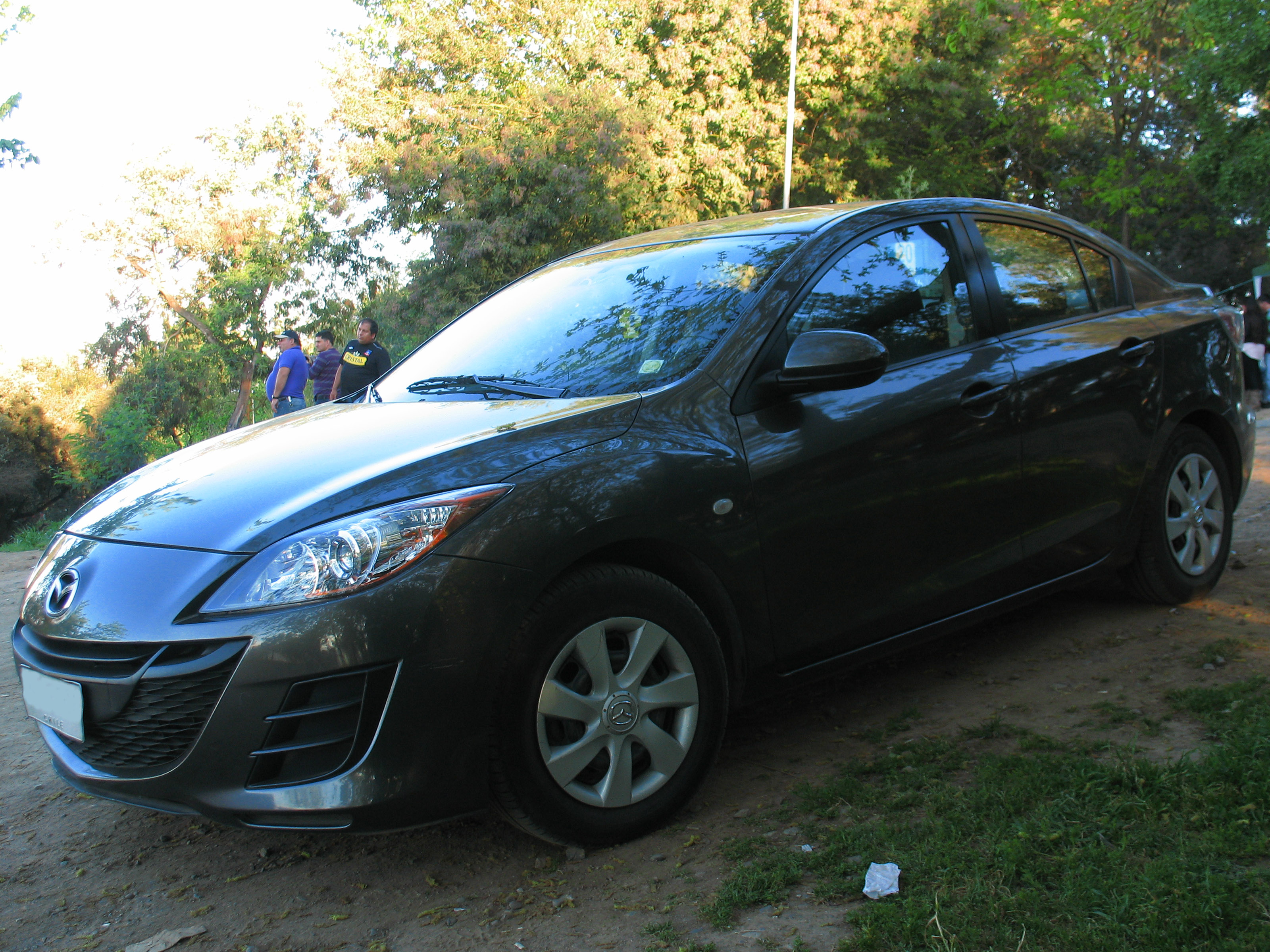
8. **Mazda 3 (2004–2010)**Mazda’s first-generation 3 compact cars, produced between 2004 and 2010, offer a striking example of how insufficient rust protection can undermine an otherwise celebrated model. Initially praised for nimble handling, fuel economy, and strong value, the Mazda 3 was a sales success on paper. However, drivers in cold climates quickly observed widespread rust forming under the rear wheel arches and along the bottom edges of the doors, frequently manifesting in as few as four or five winters.
This rapid onset of corrosion was attributable to a critical combination of factors: notably thin paint applications, conspicuously limited undercarriage protection, and conspicuously exposed weld seams. Together, these elements created a perfect storm for accelerated corrosion, making the vehicles highly susceptible to winter’s harsh conditions. In many reported cases, even diligent and consistent washing routines proved largely ineffective in staving off the inevitable progression of the rust.
While Mazda has commendably improved its manufacturing techniques, those owning older Mazda 3s in wintery climates must prepare for significant repair bills or the gradual disintegration of cosmetic and structural components. The unfortunate example of the Mazda 3 serves as a profound cautionary tale, underscoring that rust is far more than a mere aesthetic problem; its well-known tendency to corrode rapidly contributed to plummeting resale values in northern regions.
Car Model Information: 2016 Mazda CX-5 Grand Touring
Name: Mazda3
Manufacturer: Mazda
Aka: Mazda Axela (Japan and China, 2003–2019)
Production: 2003–present
Class: Compact car
BodyStyle: Sedan (automobile),hatchback
Layout: Front-engine, front-wheel-drive layout,Front-engine, four-wheel-drive layout
Predecessor: Mazda Familia
Categories: 2010s cars, 2020s cars, All Wikipedia articles written in American English, All articles needing rewrite, All articles with dead external links
Summary: The Mazda3 is a compact car manufactured by Mazda since 2003 over four generations. The body styles have been a 5-door hatchback and 4-door sedan across all generations. It was sold as the Mazda Axela (Japanese: マツダ・アクセラ, Hepburn: Matsuda Akusera) in China and Japan until 2019.
The first generation was produced in Japan from June 2003 until November 2008 and replaced the Familia (also known as the 323 or Protegé) as Mazda’s C-segment model. It was sold in North America for the 2004-2009 model years. It was also produced in Colombia from 2004 until 2014, in Iran from 2006 until 2010, and in China from 2007 until 2013.
The second-generation Mazda3 for the 2009 model year was unveiled in late 2008, with the sedan premiering at the Los Angeles Auto Show and the hatchback at the Bologna Motor Show. For the 2012 model year, Mazda began offering the Mazda3 with their newly developed Skyactiv technology, including a more rigid body, a new direct-injection engine, and a new 6-speed transmission.
The third generation was introduced in mid-2013 for the 2014 model year. The third-generation model is the first Mazda3 to adopt the “Kodo” design language and a more complete Skyactiv range of technologies and the first to be made by Mazda independently.
The fourth-generation Mazda3 for the 2019 model year was unveiled in November 2018 at the Los Angeles Auto Show. For the 2019 model, the all-new Mazda3 is equipped with the updated Skyactiv technologies, including a spark-controlled compression ignition engine marketed as the Skyactiv-X.
A performance-oriented version of the Mazda3 was marketed until 2013 as the Mazdaspeed3 in North America, Mazdaspeed Axela in Japan, and the Mazda3 MPS in Europe and Australia.
The Mazda3 became one of Mazda’s fastest-selling vehicles, with cumulative sales in January 2019 of over 6 million units.
Get more information about: Mazda3
Buying a high-performing used car >>>
Brand: Mazda Model: 3
Price: $14,980 Mileage: 93,888 mi.

9. **Nissan Altima (2002–2006)**The early-2000s Nissan Altima, specifically models produced between 2002 and 2006, serves as a clear reminder that even popular mainstream sedans can fall victim to pervasive rust when manufacturer protection fails to contend with climate challenges. According to numerous owner reports, Altimas from this period frequently began to suffer from considerable body panel rust, alongside concerning corrosion around the strut mounts and vital undercarriage components, often after enduring just a few harsh winters. These issues were consistently most pronounced in states where road salt and deicing compounds are heavily utilized.
Mechanics identified several critical weaknesses contributing to this rust susceptibility. The wheel wells often lacked sufficient liner protection, creating direct pathways for corrosive road salt to contact bare metal surfaces. Furthermore, the paint process failed to provide robust coverage, particularly near hidden seams and under the hood. Compounding these problems was inadequate water drainage, allowing moisture to pool in critical structural areas, providing fertile ground for corrosion.
Many Altima owners, stunned by the premature and extensive rusting, often discovered the true extent of the damage only after hearing unusual rattles or observing distinct bubbling in the paint. By this advanced stage, repairs were typically prohibitively expensive. The Nissan Altima from these specific model years is now frequently cited in rust comparison forums and technical bulletins as a sedan that should ideally be avoided by anyone residing in a snowy region, underscoring its significant long-term vulnerability.
Car Model Information: 2024 Nissan Altima 2.5 SV
Name: Nissan Altima
Caption: 2024 Nissan Altima SR (L34; US)
Manufacturer: Nissan
Aka: Nissan Bluebird
Production: 1992–present
Class: Compact car
Predecessor: Nissan Bluebird,Nissan Stanza
ModelYears: 1993–present
Categories: 2000s cars, 2010s cars, 2020s cars, All-wheel-drive vehicles, All Wikipedia articles written in American English
Summary: The Nissan Altima is a mid-size car manufactured by Nissan since 1992. It is a continuation of the Nissan Bluebird line, which began in 1955.
The Altima has historically been larger, more powerful, and more luxurious than the Nissan Sentra but less so than the Nissan Maxima. The first through fourth-generation cars were manufactured exclusively in the United States and officially sold in North and South America, along with the Middle East and Australia. For other markets, Nissan sold a related mid-size sedan called the Nissan Teana which was between the Altima and Maxima in terms of size. In 2013, the Teana became a rebadged version of the fifth-generation Altima.
The name “Altima” was originally applied to a top trim line of the Nissan Leopard for the Japanese market in 1986, and then to the Nissan Laurel Altima mid-size car sold in Central America and the Caribbean before 1992. In 1992, Nissan discontinued the Stanza which was a Nissan Bluebird clone, replacing it with the US-built Altima, while remaining a compact car. The first Altima was produced in June 1992, as a 1993 model. All Altima models for the North American market were built in Smyrna, Tennessee, until June 2004, when Nissan’s Canton, Mississippi plant also began producing the model to meet high demand.
Get more information about: Nissan Altima
Buying a high-performing used car >>>
Brand: Nissan Model: Altima
Price: $19,890 Mileage: 56,505 mi.
Read more about: Unearthing 15 Unsung 90s Sedans: Reliable Transport Gems for Today’s Commuters

10. **Dodge Caravan / Chrysler Town & Country (2001–2007)**Few vehicles are as profoundly family-oriented as the Dodge Caravan and its close sibling, the Chrysler Town & Country. However, buyers seeking affordable minivan solutions in wintry climates from 2001 to 2007 often learned about severe rust issues firsthand and the hard way. Models from this period exhibited a high propensity for rapid corrosion along crucial rocker panels, within the sliding door tracks, and across vital undercarriage supports, especially in regions where roads are regularly treated with salt.
Manufacturing approaches during these years notably relied on cost-effective but ultimately inadequate protective coatings. Furthermore, the vehicles’ fundamental design inadvertently allowed water to become easily trapped along body seams and beneath plastic trim elements, creating stagnant reservoirs of corrosive moisture. Even diligent efforts, such as regular garage parking or frequent rinsing, struggled to prevent rust from appearing conspicuously below the doors, around the rear wheels, and underneath the van’s structure.
Owners often found themselves deeply frustrated, as the mechanical longevity and impressive practicality of these minivans stood in stark contrast to the significant cosmetic and structural issues caused by rampant rust. This problematic contradiction frequently compelled some buyers to seek out costly aftermarket undercoating solutions or sell their vans prematurely. Highlighting these models spotlights the overlooked reality that rust problems do not discriminate by body style; family vehicles are just as susceptible when design and materials fail to keep pace with environmental demands.
**Understanding Rust and Implementing Prevention Strategies**
Beyond identifying models that require cautious consideration, comprehending the fundamental nature of rust and how to proactively combat it is absolutely crucial for every car owner. Whether your vehicle is a celebrated champion of rust resistance or one that has a known propensity for deterioration, diligent preventative maintenance remains your single most effective defense against the insidious and silent assailant of corrosion.
**Understanding Rust: Formation and Concerns**
Rust becomes a major concern after the colder months due to a powerful trifecta of road salt, pervasive moisture, and relentlessly fluctuating temperatures, all of which vigorously accelerate the oxidation process. This degradation is far more than a mere cosmetic issue; rust has the capacity to critically undermine a vehicle’s structural integrity, leading to significantly expensive repairs and potentially compromising crucial safety systems like brake and fuel lines, ultimately diminishing its long-term resale value. The problem is often insidious, as rust frequently initiates in hidden areas such as the undercarriage, wheel wells, and chassis, making early detection difficult until damage becomes severe.
Rust is fundamentally the result of oxidation, an electrochemical reaction that occurs when metal is exposed to both oxygen and moisture. This process is dramatically hastened in winter because road salt effectively lowers the freezing point of water, enabling moisture to remain in liquid form and adhere to metal surfaces for extended durations. This creates a perpetually corrosive environment, even on days that appear dry. The undercarriage and wheel wells bear the brunt of winter damage, constantly exposed to corrosive slush, ice, and road debris. Poor vehicle maintenance and the accumulation of excess water in hidden cracks and cavities further exacerbate this issue, providing fertile ground for rust to take hold and spread rapidly.
**Practical Prevention Strategies for All Car Owners**
Implementing proactive measures is indispensable for mitigating rust, both before winter arrives and immediately after it subsides. A crucial first step for every car owner is to thoroughly clean their vehicle, paying meticulous attention to the undercarriage, inside the doors, and wheel wells, as soon as the winter season ends. Road salt residue can linger for weeks, so an early spring cleaning is essential. Consistent washing throughout winter, ideally every two weeks, also removes salt buildup and significantly reduces corrosion risk. Utilizing a touchless car wash that cleans underneath the vehicle is highly effective, and supplementing with a detailed hand wash once a month allows for thorough targeting of susceptible areas.
Applying protective coatings forms another vital layer of defense. Before the first snow falls, applying a ceramic coating or quality wax creates a robust shield for the paintwork against moisture and salt. Additionally, specialized rust-proofing sprays or undercoating treatments, particularly for the undercarriage, are highly effective. Oil-based undercoatings, a cheaper alternative, can be applied to absorb salt and create a slick barrier, preventing corrosive buildup. For optimal year-round protection, consider combining these coatings with your regular bi-weekly car washes, ensuring continuous defense.
Equally important is the diligent inspection and timely treatment of any minor rust spots that may appear. Look for telltale signs such as small bubbles in the paint, orange or brown discoloration, or rough textures on metal surfaces. Light surface rust can often be managed by sanding the affected area, applying a rust converter to neutralize the corrosion, and then sealing it with touch-up paint. However, for more extensive or deeply pitted rust, professional car rust repair services are typically necessary to restore the vehicle’s finish and effectively prevent further structural degradation. Lastly, using durable rubber floor mats and ensuring the interior remains dry helps contain moisture and prevent hidden rust from forming on floorboards and other unexpected areas.
**Conclusion**
Car Model Information: 2020 Dodge Grand Caravan SE
Caption: 2011 Dodge Grand Caravan Mainstreet
Name: Dodge Grand Caravan
Manufacturer: Chrysler Corporation,Daimler AG,Chrysler LLC,Chrysler Group LLC,FCA US LLC
Class: Minivan
Layout: FF layout,F4 layout
Production: November 2, 1983 –August 21, 2020
ModelYears: 1984–2020
Related: Plymouth Voyager,Chrysler Town & Country (minivan),Dodge Mini Ram,Chrysler Voyager,Volkswagen Routan
Assembly: Windsor, Ontario,Fenton, Missouri,Fenton, Missouri,Fuzhou
Successor: Dodge Journey,Chrysler Voyager
Categories: All-wheel-drive vehicles, All articles with unsourced statements, Articles with short description, Articles with unsourced statements from December 2017, Articles with unsourced statements from May 2009
Summary: The Dodge Caravan is a series of minivans manufactured by Chrysler from the 1984 through 2020 model years. The Dodge version of the Chrysler minivans, was marketed as both a passenger van and a cargo van (the only version of the model line offered in the latter configuration). For 1987, the model line was joined by the long-wheelbase Dodge Grand Caravan. Produced in five generations across 36 model years, the Dodge Caravan is the second longest-lived Dodge nameplate (exceeded only by the Dodge Charger). Initially marketed as the Dodge counterpart of the Plymouth Voyager, the Caravan was later slotted between the Voyager and the Chrysler Town & Country. Following the demise of Plymouth, the model line became the lowest-price Chrysler minivan, ultimately slotted below the Chrysler Pacifica.
Sold primarily in the United States and Canada, the Dodge Caravan was also marketed in Europe and other international markets under the Chrysler brand (as the Chrysler Voyager or Chrysler Caravan). From 2008 onward, Dodge marketed the model line only as the Grand Caravan; Ram Trucks sold a cargo-only version of the model line as the Ram C/V Tradesman. The model line was also rebranded as the Volkswagen Routan from 2009 through 2014.
After the 2020 model year, the Dodge Grand Caravan was discontinued, ending production on August 21, 2020. For 2021 production, the Grand Caravan nameplate was moved to Chrysler, which used it for a Canadian-market version of the Chrysler Pacifica (in the United States, the exact vehicle was marketed as the Chrysler Voyager).
For its entire production run, the Dodge Caravan/Grand Caravan was manufactured by Chrysler Canada (now Stellantis Canada) at its Windsor Assembly facility (Windsor, Ontario). From 1987 until 2007, the model line was also manufactured by Chrysler at its Saint Louis Assembly facility (Fenton, Missouri). Since their introduction in late 1983, over 14.6 million Chrysler minivans have been sold worldwide (including export versions and versions sold through rebranding).
Get more information about: Dodge Caravan
Buying a high-performing used car >>>
Brand: Dodge Model: Caravan
Price: $15,490 Mileage: 85,834 mi.
The battle against rust in harsh winter conditions is a complex, multifaceted challenge, yet one that car owners can effectively confront with the right knowledge and a proactive approach. By carefully informing yourself about which vehicle models have historically struggled with corrosion, and by diligently implementing a robust regimen of preventative strategies, you can significantly safeguard your substantial automotive investment against the relentless and corrosive realities of severe winter climates. Understanding which vehicles are more susceptible to deterioration provides critical upfront insights, while consistent maintenance, strategic protective applications, and timely interventions offer the most formidable defense for ensuring long-term vehicle integrity, safety, and enduring value. Arm yourself with this essential information, and drive confidently, knowing your vehicle is thoroughly prepared for whatever challenges winter ultimately throws its way.

